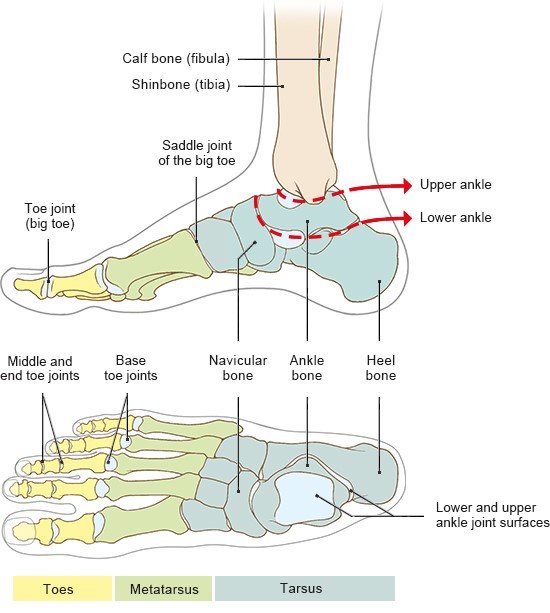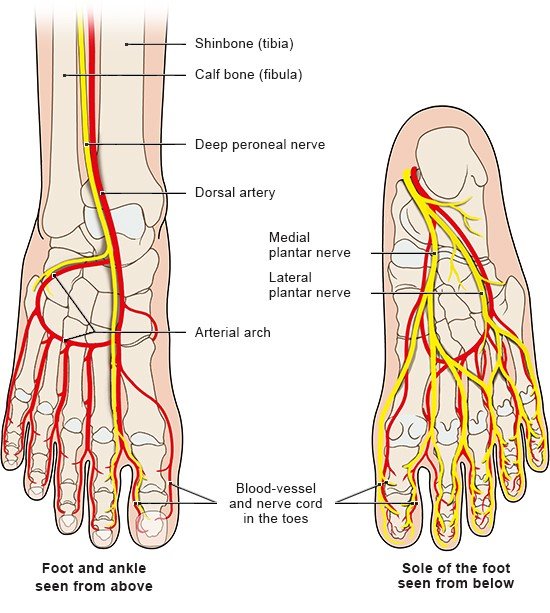Bones and joints
The human foot consists of 26 bones in total:
- 7 tarsals (at the back of the foot)
- 5 metatarsals (in the middle of the foot)
- 14 phalanges (in the toes)
They are all connected to one another by joints and ligaments. The foot can be divided into three sections based on the different joints. These sections are called the tarsus (including the ankle), the metatarsus and the toes.
The ankle connects the bones in the lower leg to the bones of the foot. It can be divided into two parts: the upper and lower ankle.
Tarsus and ankle
The seven tarsal bones are held together tightly by ligaments, and are more or less fixed in place. They are grouped in two rows – one with three bones and one with four. One of these bones – the ankle bone (talus) – forms part of the upper ankle joint along with the shinbone (tibia) and calf bone (fibula). The shin and calf bones are separated from the ankle bone by a layer of cartilage. The ankle bone is also connected to the tarsal bones and the heel bone (calcaneous). The lower ankle joint is found between the heel bone, ankle bone and navicular bone.
The upper ankle allows you to move your feet upwards, downwards, and a little to the side. The lower ankle connects the ankle bone to the bones in the tarsus and the heel bone. It doesn't move as much as the upper ankle. The lower ankle enables you to tilt your feet sideways slightly and turn them inward and outward.
Metatarsus
The second row of tarsals is connected to the metatarsus. This consists of five long bones. You can feel them quite clearly along the top of your foot. One of these metatarsal bones and the bone at the base of the big toe come together to form a saddle joint, which gives big toes their particular flexibility.
Toes
The freely movable part of your foot is made up of five toes. Each toe has three bones – apart from the big toe, which only has two. They also have three joints: at the base, in the middle and towards the end of the toe. The base joints are ball-and-socket joints, which allow you to move your toes up and down, and to spread them out a little too. The middle joints are hinge joints and can only move in one direction, meaning that they can only stretch or bend the toes.



